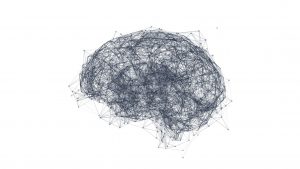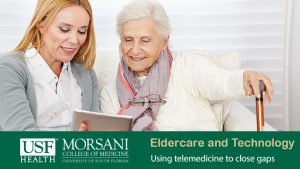Patient mediated data exchange is an idea that sounds good in a speech or on paper, but making it a reality has been nothing short of arduous for health information exchanges (HIEs) and industry stakeholders.
It’s an idea that has been discussed for years. Those who wish to see patients maintain power over their data and control how and who it flows to were bolstered during this year’s HIMSS conference in Las Vegas, where Center for Medicaid Services (CMS) Administrator Seema Verma announced the roll out of the governmentwide initiative known as MyHealthEData. The effort is led by the White House Office of American Innovation.
The initiative’s announcement was coupled with some other high-profile news: an overhaul of meaningful use and an expansion of the Blue Button Initiative, a national program dedicated to allowing patients to view and download their personal health information.
MyHealthEData’s goal is to make sure patients receive a digital copy of their entire health history through the use of application programming interfaces (APIs). These open APIs have the power to integrate all of a patient’s healthcare data into one place that is chosen by the patient rather than coming through a patient portal. That could be an app or device that incorporates data from wearables, EHRs and claims data, and has a better user experience due to familiarity. At the conference, Verma said she “envisions a world where there’s quality data and hopefully somewhere in there, cost data.”
CMS’ revamp of the meaningful use program is primarily focused on the standards that dictate compliance with the program. For example, they want to move away from “giving credit to physicians for just having an EHR to making sure its focused,” Verma said.
The changes to meaningful use will become clearer as the federal agencies involved and the Trump administration roll out a series of proposed changes by the end of the year. Their goal will be to reduce administrative burden while making meaningful use more flexible and interoperable.
The expansion to Blue Button 2.0 is essentially the planned release of an API from CMS that is standards-based, developer-friendly and allows Medicare beneficiaries to connect claims data to applications, services and research programs of their choosing. This initiative, according to the Blue Button website, uses the HL7 FHIR standard for beneficiary data. Access to this data is controlled by the beneficiary.
A Little Pushback
The MyHealthEData initiative was met with enthusiasm at the conference. It’s easy to see why, as a free-flowing data architecture in which interoperability and innovation become the primary focus is what most stakeholders in healthcare want. But the devil is in the details and it was only a matter of time before someone raised concern over the plans, which have been only lightly outlined by CMS and the Trump Administration.
Early criticism of the plan came from the American Academy of Family Physicians (AAFP), arguing that some aspects of the initiative could create more obstacles for overworked family doctors.
AAFP argued that improved, secure patient access depends on the completion of EHR interoperability., noting that’s what “practicing physicians were promised when they purchased and updated their systems to Certified Electronic Health Record Technology (CEHRT),” according to an article from Healthcare Informatics.
AAFP also wants that interoperability to be provided by EHR vendors at no additional cost or burden to the physician. Numerous studies have concluded that doctors are spending too much of their day and after-clinic hours working with their EHRs.
“Lack of this promised interoperability leaves physicians beholden to EHR vendors — a situation that has allowed vendors to engage in price gouging when peddling software upgrades and maintenance,” AAFP stated. “We strongly urge CMS to require EHR vendors to provide any new government-required updates to such systems without additional cost to the medical practice.”
Overall, though, even the AAFP is board with most of what CMS and the White House want to do.
The Patient Data Sharing Reality
Giving patients meaningful control over their data is a bold step, one that has its own security risks and educational complications.
The reality of patients sharing their data may not be as ideal as some would believe. Privacy concerns are growing, given high profile stories of data being misused and the sheer volume of healthcare data breaches in recent years. With that, consumer confidence has decreased and will likely affect the willingness of many patients to share their health data.
A Black Book survey of healthcare consumers revealed that 57% of respondents were concerned about privacy protections that are in place and whether the privacy of their health data could be maintained, while 87% said they would be unwilling to share their full medical histories.
Additionally, patients may not be well-versed in data management, leading to them not sharing their data with parties they probably should while also sharing it with parties they shouldn’t. And until a technology such as blockchain is more widely introduced into health information management strategies, relying on consumers to protect their information may be complicated and endanger data integrity, which could have an adverse effect on data analytics efforts across the board.
For its part, the Office of the National Coordinator for Health IT has looked at patient attitudes toward data security and to examine where patients have the most concerns over the safety of their information.
As it turns out, the majority (75%) of individuals have confidence in safeguards against unauthorized viewing of their health information in general, right up until it’s time for data to be shared between providers. Once exchange is involved, only 66% remain confident, with 10% saying they withhold information from providers over privacy concerns.




